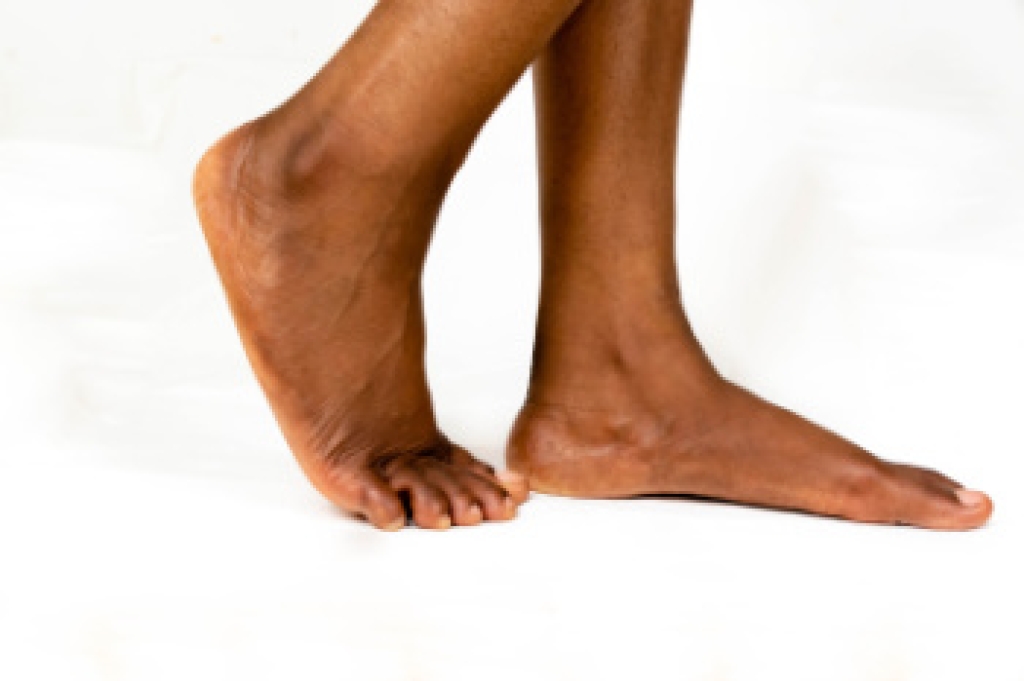
Flat feet, also known as fallen arches, occur when the arches of the feet collapse or do not develop fully, causing the entire sole to touch the ground. They may be present from birth, result from injury, or develop over time due to weakened tendons, obesity, or aging. Flat feet may look visibly low or absent in the arch area, and some individuals notice inward tilting of the ankles. Symptoms include foot fatigue, aching in the heel or arch, swelling along the inside of the ankle, or discomfort when standing or walking for long periods. Not all flat feet cause pain, but when symptoms occur, they can lead to knee, hip, or back problems due to altered gait. A podiatrist can diagnose flat feet through physical examination, gait analysis, and imaging if needed. Treatment may include custom orthotics, supportive footwear, stretching or strengthening exercises, and guidance on activity modification. Early intervention helps reduce discomfort and prevent long-term complications. If you experience persistent foot pain or notice changes in your arches, it is suggested that you make an appointment with a podiatrist.
Flatfoot is a condition many people suffer from. If you have flat feet, contact one of our podiatrists from Waterbury Podiatry Consultants. Our doctors will treat your foot and ankle needs.
What Are Flat Feet?
Flatfoot is a condition in which the arch of the foot is depressed and the sole of the foot is almost completely in contact with the ground. About 20-30% of the population generally has flat feet because their arches never formed during growth.
Conditions & Problems:
Having flat feet makes it difficult to run or walk because of the stress placed on the ankles.
Alignment – The general alignment of your legs can be disrupted, because the ankles move inward which can cause major discomfort.
Knees – If you have complications with your knees, flat feet can be a contributor to arthritis in that area.
Symptoms
- Pain around the heel or arch area
- Trouble standing on the tip toe
- Swelling around the inside of the ankle
- Flat look to one or both feet
- Having your shoes feel uneven when worn
Treatment
If you are experiencing pain and stress on the foot you may weaken the posterior tibial tendon, which runs around the inside of the ankle.
If you have any questions, please feel free to contact our offices located in Waterbury and Southington, CT . We offer the newest diagnostic and treatment technologies for all your foot care needs.




